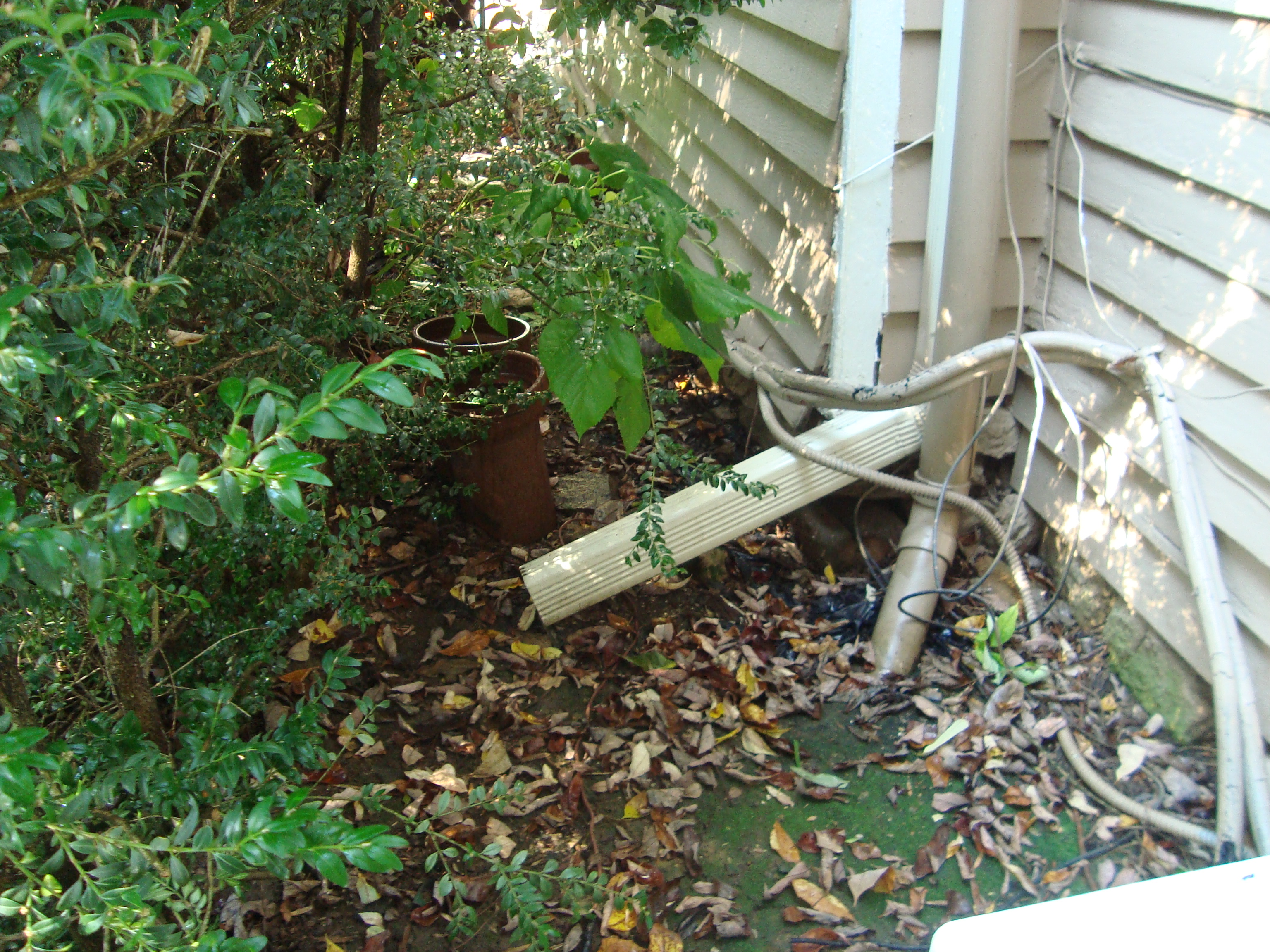Yesterday we posted this picture asking for your thoughts on the building science issues. Here are the issues we found:
- Notice that the home owners have extended the downspout in an effort to fix this problem, but issues still exist.
- There is fungus growing on the exposed rock indicating the drainage is not right. Water is pooling next to the foundation which could lead to moisture issues in the crawl space. It could also undermine the foundation wall over time as the ground dries out through different seasons.
- There is also landscape complications with bushes that have become overgrown. This will tend to push moisture onto the wood siding and hold it there. Wood siding will absorb the moisture, pushing / pulling it into the wall system. If there is insulation in the cavity, there is a good chance it will get wet diminishing the effectiveness. Enough moisture could also lead to rot and mold growth if not allowed to dry out.
- Another issue is the stone foundation. This is a hard issue to correct, but should be monitored. The old stacked stones work well to give a solid foundation when done right, however, the rocks will wick water into the wall system without fail. This leads to rot and mold issues if it is not allowed to dry.
- There is also a good chance that termites can get into the walls without detection as their tunnels can be built between rocks on the inside or outside of the foundation wall.
Anything else I missed, please add your thoughts in the comments section!





